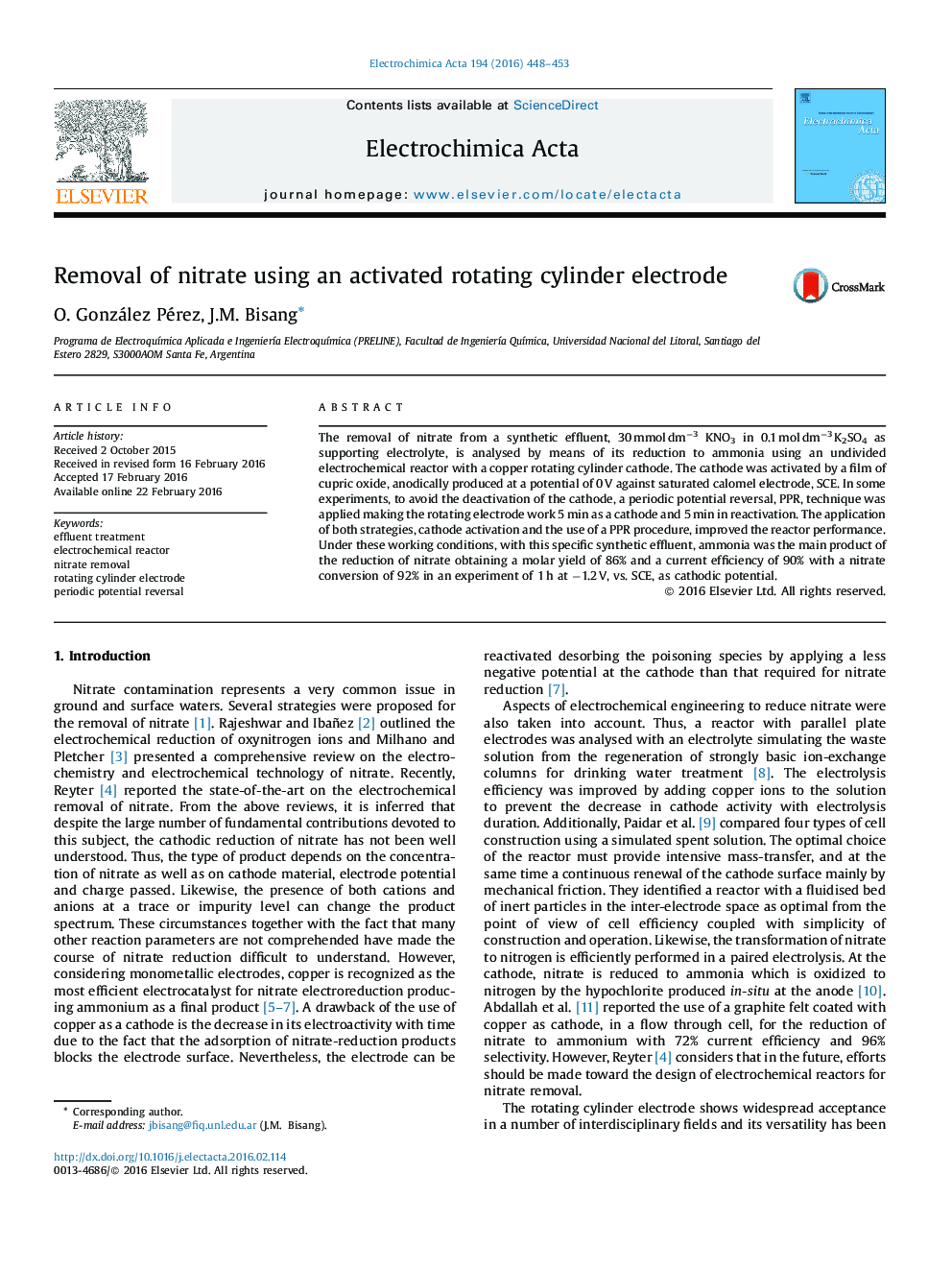| Article ID | Journal | Published Year | Pages | File Type |
|---|---|---|---|---|
| 183141 | Electrochimica Acta | 2016 | 6 Pages |
•Copper activated with cupric oxide is efficient for the reduction of nitrate to ammonia.•Periodical potential reversal is necessary to reactivate the cathodic surface.•A reactor with a rotating cylinder cathode is efficient for the removal of nitrate.
The removal of nitrate from a synthetic effluent, 30 mmol dm−3 KNO3 in 0.1 mol dm−3 K2SO4 as supporting electrolyte, is analysed by means of its reduction to ammonia using an undivided electrochemical reactor with a copper rotating cylinder cathode. The cathode was activated by a film of cupric oxide, anodically produced at a potential of 0 V against saturated calomel electrode, SCE. In some experiments, to avoid the deactivation of the cathode, a periodic potential reversal, PPR, technique was applied making the rotating electrode work 5 min as a cathode and 5 min in reactivation. The application of both strategies, cathode activation and the use of a PPR procedure, improved the reactor performance. Under these working conditions, with this specific synthetic effluent, ammonia was the main product of the reduction of nitrate obtaining a molar yield of 86% and a current efficiency of 90% with a nitrate conversion of 92% in an experiment of 1 h at −1.2 V, vs. SCE, as cathodic potential.
